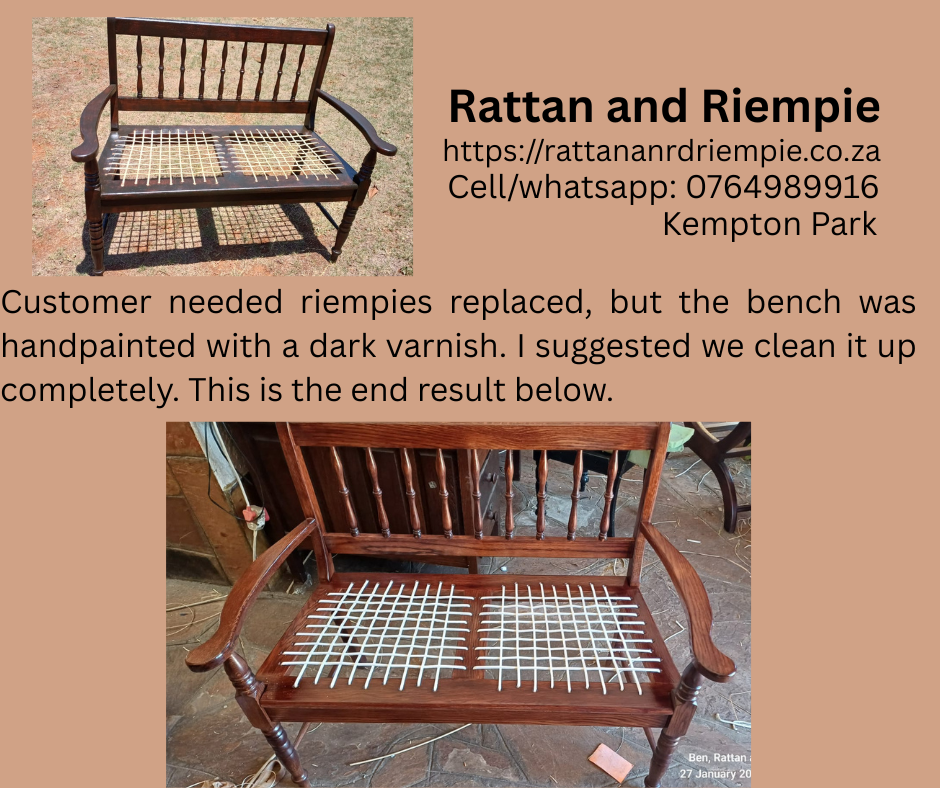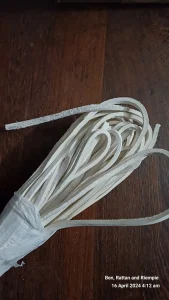The riempie chair, with its distinctive woven leather seat, is a piece of furniture deeply rooted in South African history and craftsmanship. These chairs, known for their durability and comfort, have been a staple in homes across the country for generations. Central to the construction of these chairs are the “riempies” themselves – the strips of leather that form the seat and back. However, not all riempies are created equal. Two primary types are commonly used: raw riempies and white alum riempies. While both serve the same fundamental purpose, they differ significantly in their preparation, properties, and usage. Understanding these differences is crucial for anyone involved in the restoration, repair, or creation of riempie chairs.

A Historical Perspective
Before delving into the specifics of raw and white alum riempies, it’s essential to understand the historical context of this type of furniture. The riempie chair’s origins can be traced back to the early days of South African settlement. As European settlers moved inland, they adapted traditional furniture-making techniques to suit the available materials. Leather, readily available from livestock, became a primary resource. The use of leather strips to create chair seats was a practical solution, offering both comfort and longevity in a time when more conventional materials might have been scarce or unsuitable for the climate. This ingenuity gave rise to the iconic riempie chair, a design that has stood the test of time.
Raw Riempies: The Natural Approach
Raw riempies, as the name suggests, are made from minimally processed leather. The hides are typically prepared through a process that involves drying and stretching, but they are not subjected to extensive chemical treatment. This results in a natural, uncolored leather that retains many of its original characteristics.

- Preparation: The preparation of raw riempies typically involves the following steps:
- Hiding: The process begins with the animal hide, usually from cattle.
- Cleaning: The hide is cleaned to remove any flesh, hair, and other unwanted material.
- Stretching: The hide is stretched and dried.
- Cutting: The dried hide is then cut into long, thin strips, which become the riempies.
- Characteristics: Raw riempies possess several distinctive characteristics:
- Natural Color: They have a natural, light brown or tan color that can vary depending on the specific hide used.
- Flexibility: Raw riempies are known for their flexibility when wet. This pliability is crucial for the weaving process, allowing the riempies to be manipulated and stretched around the chair frame.
- Tendency to Shrink: A key characteristic of raw riempies is their tendency to shrink significantly as they dry. This shrinkage is a fundamental aspect of how they are used in chair construction, creating a taut and supportive seat.
- Susceptibility to Moisture: Raw riempies are more susceptible to moisture and humidity compared to treated riempies. They can become brittle if allowed to dry out completely or deteriorate if exposed to excessive moisture.
- Usage: The application of raw riempies in chair making requires a specific technique:
- Soaking: Raw riempies must be soaked in cold water before use. This soaking process softens the leather, making it pliable and workable.
- Weaving: The softened riempies are then woven across the chair frame in a specific pattern, creating the seat and back.
- Drying: As the wet riempies dry, they shrink and tighten, creating a strong, taut, and supportive surface. This shrinkage is a critical element of the chair’s construction.
- Maintenance: Chairs with raw riempies may require periodic maintenance to prevent the leather from drying out and becoming brittle. This can involve occasional cleaning and conditioning with appropriate leather care products.
White Alum Riempies: A Treated Alternative
White alum riempies, in contrast to raw riempies, undergo a specific treatment process involving aluminum sulfate, commonly known as alum. This treatment alters the properties of the leather, making it suitable for chair weaving in a different manner.

- Preparation: The preparation of white alum riempies involves a tanning process using alum:
- Hiding: The process also starts with animal hides.
- Cleaning: The hides are cleaned.
- Alum Treatment: The hides are treated with a solution of aluminum sulfate (alum). This process, while often referred to as “tanning,” is technically different from traditional tanning methods that use tannins from tree bark. Alum treatment changes the chemical composition of the leather.
- Drying and Cutting: The hides are then dried and cut into strips.
- Characteristics: White alum riempies exhibit distinct characteristics:
- Pale Color: They have a characteristic pale, whitish color due to the alum treatment.
- Water: Alum riempies are NEVER soaked and should not get wet. Water will cause them to dry out and crack. If there is a dity spot, simply wipe it down with lightly dampend cloth.
- Usage: The application of white alum riempies in chair making differs from that of raw riempies:
- No Soaking. NEVER: A crucial difference is that white alum riempies should not be soaked in water. They are designed to be used dry.
- Direct Weaving: The dry riempies are woven directly across the chair frame.
- Tautness Achieved Through Weaving: The desired tautness of the seat is achieved through the weaving process itself, by pulling and stretching the dry riempies as they are woven.
- Less Shrinkage, Different Feel: Because these riempies do not shrink once fitted, the final feel of the chair seat is somewhat different from that of a chair made with raw riempies. They will feel less firm.
Key Differences Summarized
| Feature | Raw Riempies | White Alum Riempies |
|---|---|---|
| Treatment | Minimal processing, natural drying | Treated with aluminum sulfate (alum) |
| Color | Natural light brown/tan | Pale, whitish |
| Flexibility | Flexible when wet | Should never get wet |
| Shrinkage | Shrinks significantly when drying | Should never get wet |
| Soaking | Must be soaked in cold water before use | NEVER soaked in water |
| Weaving | Woven wet, relies on shrinkage for tautness | Woven dry, tautness achieved during weaving |
| Moisture Resistance | More susceptible to moisture | Should never get wet |
| Maintenance | Requires regular conditioning | No leather polish/creams. Dirt should be wiped of quickly with a slightly damp cloth |
Choosing the Right Riempies
The choice between raw and white alum riempies often comes down to personal preference, traditional methods, and specific project requirements.
- Raw riempies are often favored by those who prefer traditional methods and the natural feel of untreated leather. The process of working with wet riempies and witnessing their transformation as they dry can be deeply satisfying for craftspeople. They offer a unique “springy” feel.
- White alum riempies are sometimes preferred for their ease of use, as they do not require soaking, and their paler color, which might be desirable in certain aesthetic contexts. Makes for a beautiful contrast with dark wood, such as imbuia.
Conclusion
Both raw and white alum riempies have their place in the art of riempie chair making. Raw riempies, with their natural character and the reliance on shrinkage for tension, represent a more traditional approach. White alum riempies, with their treated composition and ease of use, offer a viable alternative. Understanding the differences between these two types of riempies is essential for anyone seeking to restore, repair, or create these iconic South African chairs. The choice ultimately depends on the desired aesthetic, the specific project requirements, and the craftsman’s personal preference, but the result in either case is a piece of furniture that reflects both history and enduring craftsmanship.
